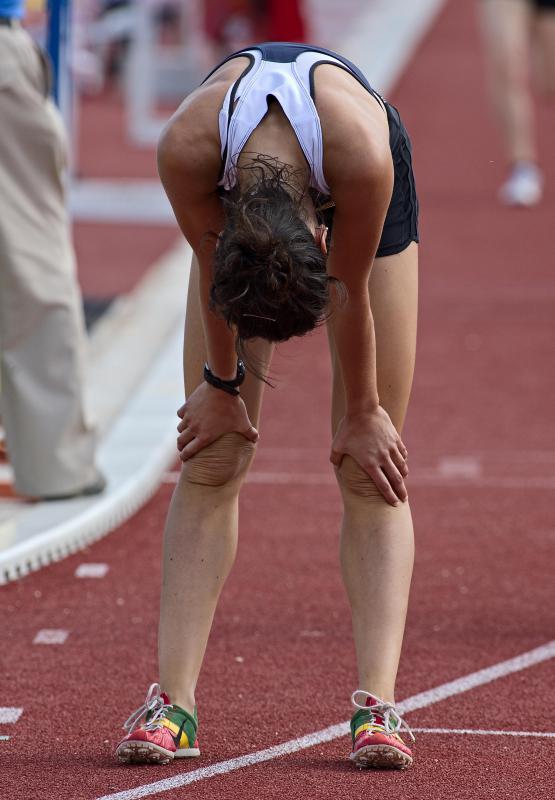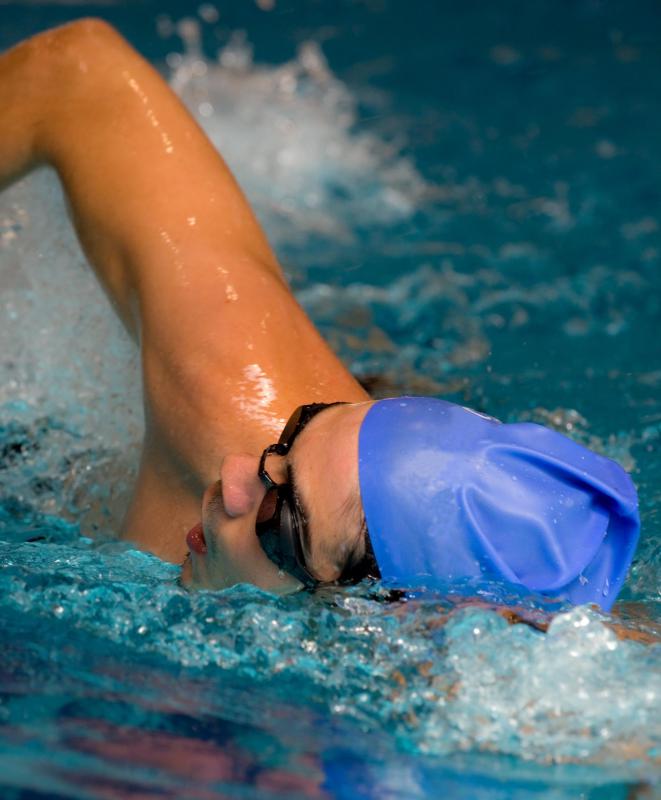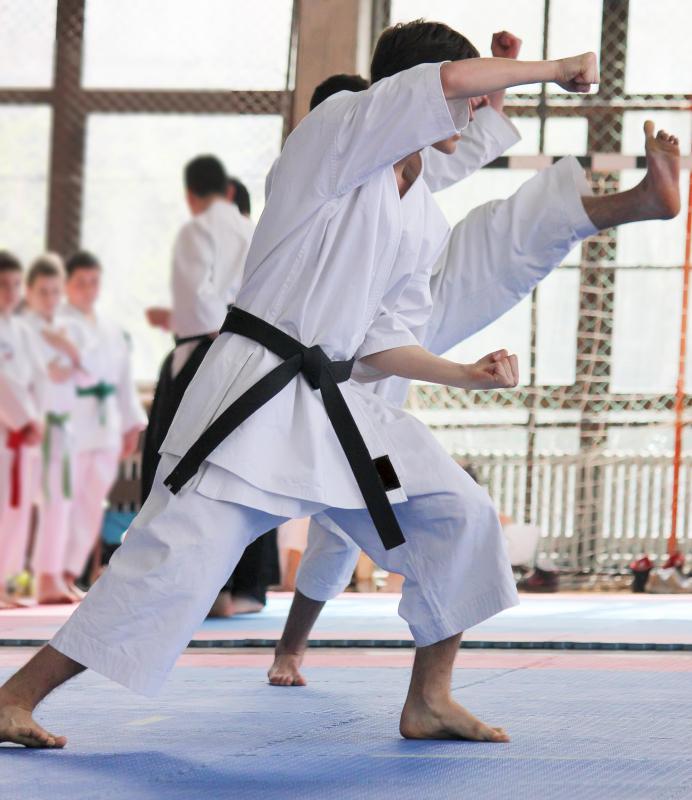At TheHealthBoard, we're committed to delivering accurate, trustworthy information. Our expert-authored content is rigorously fact-checked and sourced from credible authorities. Discover how we uphold the highest standards in providing you with reliable knowledge.
What is Resistance Breathing?
Resistance breathing is a breathing exercise done with resistance, with the goal of strengthening the muscles used in respiration. Resistance is a common feature in muscle strengthening and training in other regions of the body, and some people believe incorporating resistance training into breathing is beneficial for athletes and people with breathing disorders as well. Numerous studies have been conducted to test different resistance breathing protocols and determine how effective they are for improving athletic performance and patient outcomes.
The use of resistance breathing can be seen in a number of physical disciplines like yoga, tai chi, and martial arts such as karate, where people do breathing exercises to learn to breathe deeply and evenly in a variety of conditions. In these disciplines, the resistance is provided with the use of physical obstacles like pursing the lips or holding the nose shut to increase resistance during breathing. People may meditate, hold physical poses, or engage in other activities while doing breathing exercises, under the guidance of someone trained in the discipline who provides instruction and support. Breathing exercises are performed in sets, exactly like other muscle exercises.

It is also possible to use valves, masks, and other devices for this method of breathing. This can be seen in settings like postoperative recovery, where patients may be encouraged to do breathing exercises to help their lungs recover after surgery. These devices are also used in spirometry, a type of medical testing performed to evaluate lung capacity and other functions associated with breathing. Many are available by prescription only, after a doctor evaluates a patient to determine the patient's needs and discusses the exercises with the patient.

Proponents of resistance breathing argue that it allows people to breathe more deeply, facilitates gas exchange in the lungs, and can allow people to hold their breath longer. This can be useful for athletes, especially swimmers. For people with breathing disorders, exercises to improve respiratory function can also be beneficial, and can help patients maintain their health and reduce reliance on medication.

However, this method of breathing is not necessarily safe for everyone. People interested in doing breathing exercises should discuss them with their doctors, as there may be contraindications that could make the exercises unsafe for a patient. A doctor may also have recommendations for specific exercises and activities that will be safer for a patient and can provide a referral to a respiratory therapist to get more information about breathing exercises and respiratory health.
AS FEATURED ON:
AS FEATURED ON:
















Discussion Comments
The world famous Harry Houdini for example held his breath underwater for over three minutes. That record may have been surpassed since then, I don’t know, but that’s quite a feat.
You don’t accomplish that through sheer willpower. You only accomplish it by bringing your body to a place where it needs as little oxygen as necessary to survive.
I think ultimately this is a combination of physical fitness and the continual practice of resistance breathing techniques described in the article. Of course you don’t have to be a magician to benefit from these techniques.
They would serve you well if you were in a survival situation, like being trapped in a mine, and had little oxygen to survive. In that scenario you would need to calm down and use as little oxygen as possible.
@hamje32 - At my workplace they’ve introduced a new class called Pilates. Apparently this is something that is similar to Yoga. Participants engage in sequential breathing where they learn to take deep breaths.
They also learn to locate their diaphragm and breathe from that location. That is supposedly the secret of real breathing; use your diaphragm, not your lungs.
I know they teach this to people taking singing lessons. It really helps you to breathe better and relax more. I agree that you should learn the principles behind successful, regular breathing before moving on to more strenuous aerobic breathing such as what is described in the article.
@MrMoody - I guess it would be okay as part and parcel of a resistance fitness program. But I do have some reservations. A patient that is prone to panic attacks for example should not participate in resistance breathing in my opinion.
If you put a mask on such a patient, it can trigger an attack and you will defeat the whole purpose for the exercise. I think only people who have begun some sort of training program and have had some exercise in managing their breathing should undertake resistance breathing.
Imposing this on someone totally new is probably not a good idea. Maybe it would be better if you start out with simple breathing exercises first. Later you can move on to resistance breathing training.
I have never done yoga or anything like that. However I do believe that managing breathing stress is an important part of athletic training –or any type of situation where you are under duress.
For example, I know that in day to day activities, you can be in a situation where you are in fear or panic mode. In that setting your breathing will increase. Your heart will start to beat faster and adrenalin will shoot through your body.
One of the things that therapists will tell you is to try to take slow, deep breaths during this time to calm yourself down and regain your composure. Once you collect yourself in this manner, then you will be able to deal with the situation in the right manner.
So I think resistance breathing follows the same premise; manage your breathing patterns under stress and you will increase your ability to perform.
Post your comments